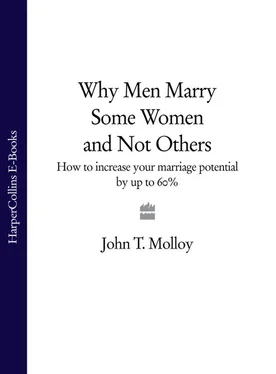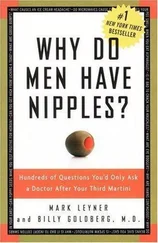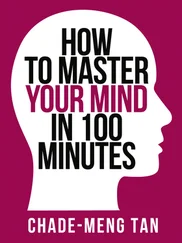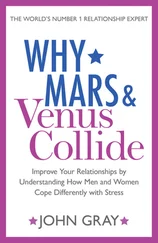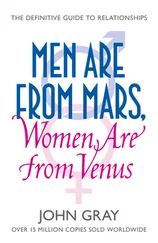I was very upset that something I had said could make a person feel suicidal. No matter how innocuous the statement or how innocent my purpose had been, I felt pangs of guilt. Luckily, twenty minutes later the phone rang again. It was Kelly. Not only would Robin work the next morning, she said, but she herself would be willing to help. Then she added, “In return, I’d like you to do me a favor.” Kelly wanted me to spend the afternoon with her, she said, to help her develop a research project that would show her what she was doing wrong with men she dated. The two men had treated her in an identical way, and she was convinced I had been right—there was a reason. She didn’t want to turn off every man she met by making the same mistake she had made with those two.
I didn’t know if I could come up with a study that would uncover such personal information, but she said all she asked was that I do my best. When I continued to hesitate, Robin got on the phone and pleaded with me to help. Reluctantly, I agreed. I knew Kelly was a very good researcher, and I was confident that if I developed a survey, she had the skills to use it effectively.
The next day, I told them the plan I’d hatched after getting off the phone with them the previous evening. Since Kelly wanted to know why two men she’d dated had married someone else, my plan was to stop couples coming out of the marriage license bureau and ask them about their relationships. That would let us compare her relationships to their relationships and see if there were any significant differences.
Kelly loved my idea, and we went to work. A majority of the engaged couples were young, in a good mood, and more than willing to talk about how, when, and where they had met and courted. First we asked general questions about their relationships; then we became more specific. The first step we took was to separate the men from the women, because, as experienced researchers, we knew both parties’ answers would be more open and honest if the future spouse was not listening. We found a local diner and paid the owner to let us use the back room. I took the men to one table, and the two sisters took the women to another. We supplied refreshments and did our best to make them feel comfortable and relaxed.
After talking with the first three couples, we compared notes and added questions that would fill in gaps in our information. We quickly approached two more couples and interviewed them in the same place. This time, we tailored our questions to cover specific topics we thought needed further investigation. Before the marriage license bureau closed, we had questioned four sets of three or more couples, refining our approach after each set.
By the end of the day, Kelly reported that she knew exactly what she was doing wrong with the men she dated. I sat her down and told her she was too good a researcher to say that. We had interviewed only fourteen people each, and there was no way data from such a small sample could answer a question as complex as the one she had raised. Nevertheless, Kelly declared, she knew the answer: “My mistake was that I was not committed enough to marriage to insist on it.”
She saw the irony of her statement. She went on to observe that women like to accuse men of not being able to commit, but some of those same women aren’t committed enough to getting married to demand that their boyfriends marry them.
During her last two sets of interviews, without letting me know, Kelly had asked a new question: “If on your way to the marriage license bureau, your man had turned to you and said, ‘I’m not ready,’ or ‘I just can’t see myself as a married man,’ or something similar, what would you have done?” As she was driving with her first fiancé to get their marriage license, Kelly told me, he had announced he was not ready for marriage and turned the car around. She’d agreed to give him time, and she was now convinced she had made a mistake.
Sixty percent of the women coming out of marriage license bureaus she interviewed that day (and, as it turned out, more than 60 percent of the women we were to interview over the next ten years) gave essentially the same answer. They would give their intended an ultimatum: Marry me, or else .
Their answers were not identical in content or tone. A number of the women said they would give him an ultimatum the instant the question was raised, but most only hinted that they would leave him. Bear in mind, these were women who had just picked up a marriage license with the man of their dreams. Most could not bring themselves to say they would dump him. A majority said they would talk to their fiancé and help him get over his nerves. The women assumed their fiancés would just be suffering from a case of the prenuptial jitters. Their answers were generally more conciliatory than “I’d get rid of him.” When the question was refined, however, to stipulate that no matter what they did or said, he maintained he was not ready for marriage and didn’t know when or if he ever would be, nearly 60 percent indicated that they would break up with him. Most added, by way of explanation, that they would not let these men ruin their lives.
Kelly understood that interviewing a handful of couples really didn’t give her a statistically meaningful answer. But she assured me that she was willing to interview as many couples as it took to develop one. Kelly, Robin, and I spent several hours at an airport restaurant as I waited for my flight, fleshing out a survey that would identify the differences between relationships that led to marriage and those that did not.
I took a copy of the survey with me to polish on the plane. After I got home, we spent two hours on the telephone putting together a questionnaire and working out interviewing procedures. I agreed that when Kelly sent me the raw data, I would write a report.
After a month or two, I stopped watching my mail for the results of the survey. I figured Kelly had given up on the project, since she thought she had already found the answer she needed. Six months later, when UPS delivered an enormous box of papers, I was flabbergasted. She had questioned not only people coming out of the San Francisco marriage license bureau but also newly married couples, as well as twenty-three men who had serious relationships with one woman but married another shortly after breaking off with the first. Kelly had expanded the research, and although she’d made a few mistakes in approach, most of her information was valid.
Because I had to redo one of the focus groups and survey 140 engaged couples myself, it took me almost five months to put together the report. When I shipped it off to Kelly, I thanked her for the agreement she had sent giving me exclusive rights to the research. I’m sure it was a carrot to get me to spend time fine-tuning and analyzing the material. Nevertheless, I included with the report the standard nondisclosure agreement I have all my researchers sign, even though at the time I had no intention of using the material to write a book. The commitment I had made on the spur of the moment had cost me so much time and money that I didn’t want to look at that research ever again.
The First to Test the Research
Almost two years to the day after Kelly had started the research, she called to tell me she was getting married. She had followed the guidance she had gleaned from her own research. She had found a new man she was crazy about, but she had not let him treat her the way the first two men did. Kelly also reported that her sister, Robin, had just become engaged, and she thought the reason she had no problem getting her boyfriend to commit was that she had also used my report as her guide. That was nine years ago.
In October 1993, the next stage of the research had its beginning when another young woman, Karen, confronted me in the hallway of a company where I was running training sessions in nonverbal sales techniques. She complained that my report on getting married—which was being passed around without my permission—did not answer all the questions she had. Karen indignantly pointed out that, according to the report, there’s a certain time in most relationships when men are most likely to commit—but the report never explained when that occurs. She was outraged that I thought there were stages in relationships but had not bothered to identify them. “Don’t you think you have an obligation to find out?” she demanded.
Читать дальше
